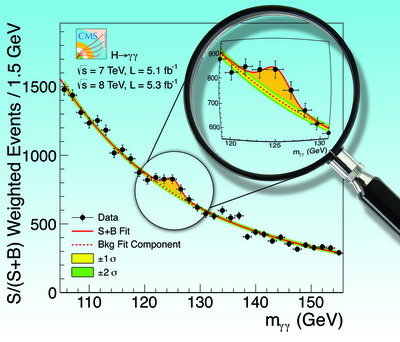Analysis of CMS data

Prof. Wallny has been involved in the analysis of proton-proton collision data at the LHC since his arrival at ETH. During these years members of his group have had a leading role in the discovery of the Higgs boson through its decay to two W-bosons, a long-standing analysis focus pioneered by the ETH CMS group, and together with the group of Prof. Dissertori, through the decay to a pair of photons. Over the years, the group has been working both at measurements of Standard Model processes such as the precise measurement of the top–anti-top production cross section, the first result on the measurement of top–anti-top quark pair production in association with a vector boson (W or Z) and in searches for physics beyond the Standard Model (BSM). The ETH CMS group members collaborate closely on the search for SUSY in the dilepton and hadronic final states. More details about the results obtained so far by the group can be found under Selected Publications and PhD Theses.
At the dawn of the LHC Run-3 data taking period the research program of Prof. Wallny is being redirected mostly to the experimental understanding of the Higgs mechanism. While continuing the collaborating with the group of Prof. Dissertori in the analysis of the Higgs boson decay to a pair of photons, the interest is now sharpening on the bottom–anti-bottom final state. Despite being the final state with the largest branching ratio, the over-abundant presence of b-jets in LHC collision makes this channel particularly challenging. The study of the bottom–anti-bottom final state when the Higgs is produced in association with a W or a Z boson or in association with a top–anti-top quark pair allows experimental access to the Yukawa couplings to both charged fermions of the third generation.
Clearly, data analysis requires a precise understanding of the necessary ingredients such as triggers, GRID data processing and the understanding and calibration of analysis objects such as electrons, muons, jets/b-jets and missing energy, and members of the ETH CMS group also contributed visibly to CMS wide efforts in these areas.
